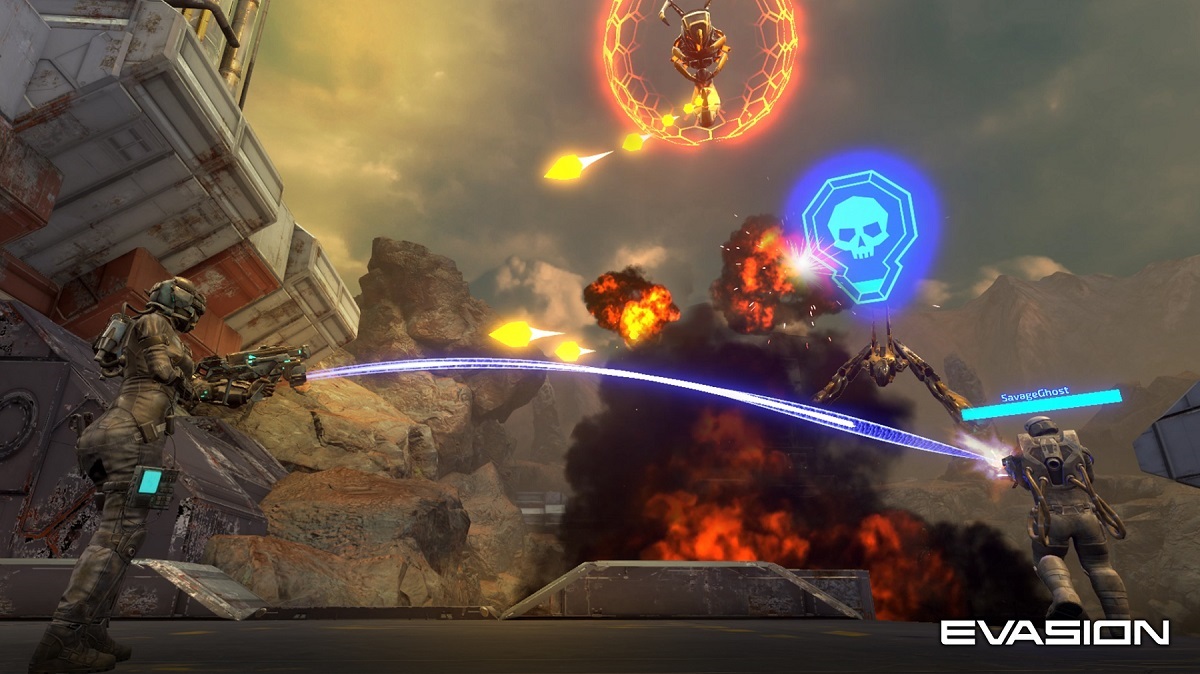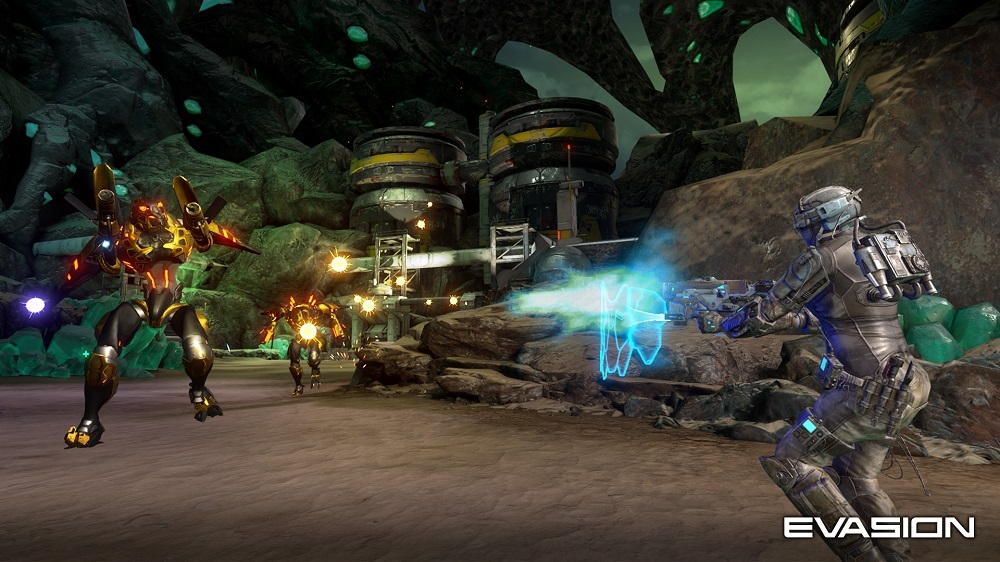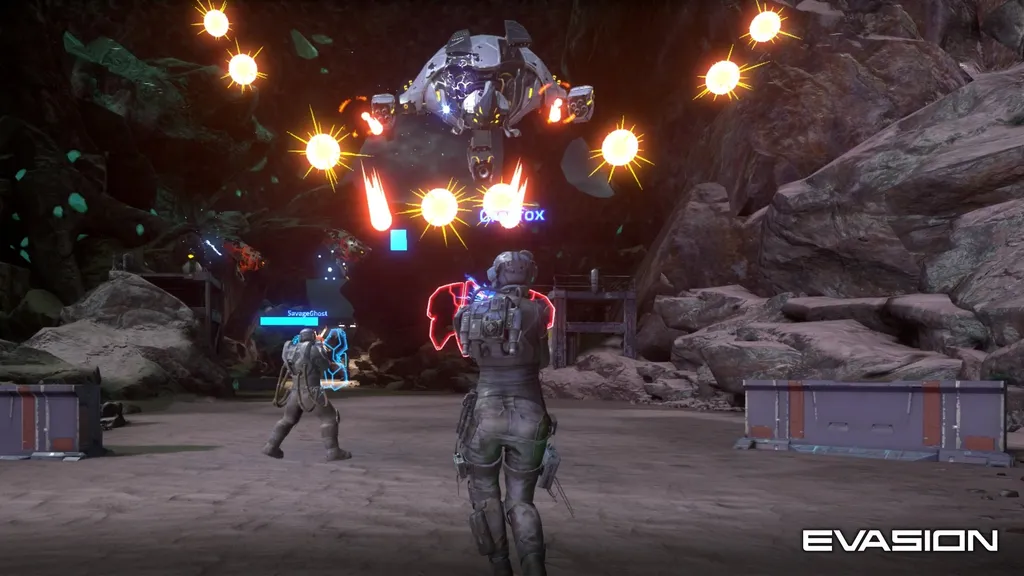There are a fair number of VR games, both available now and coming up, that feel a lot like the next evolutionary step of the arcade-style light gun shooter, like Time Crisis or House of the Dead. You have more mobility and agency in a VR game, of course, but only just, and the VR bits are used to iterate on, or just awkwardly bolted on top of, the existing gameplay model.
Evasion, conversely, is about movement and, well, evasion. On PSVR, you can play the game with the PS Aim controller, but on PC-based platforms like Rift and Vive, it uses a two-handed control scheme with the corresponding motion controllers. Either way, it’s a first-person shooter that initially feels very arcade-like, pitting your space mercenary up against armies of invading robot insects.
The studio, Archiact, is based in Vancouver, and has put a 25-person team to work on Evasion. The developers at PAX West told me that they were influenced a great deal by the recent success of Ninja Theory, and wanted to follow their lead in making a big, full-size flagship title. Right now, Evasion features nine missions with three survival modes, leavened with a bit of dark humor and a decent soundtrack.
It took me a minute to figure Evasion out. I was running into each new fight and acting like I just put roots down. I’d stand there and target-lock on each one, methodically blowing them away. That worked for a while, but the further I got into the mission at hand—defending an off-world mining colony from what seemed to be an unprovoked attack by the bugs—the less effective it became.

It was only when I realized the game was probably named Evasion for a reason—it was late, I was tired, leave me alone—that I started using my mobility to my advantage, strafing and circling like you can in a non-VR FPS. The longer you can go without getting hit, the more your weapon charges up, and the stronger your basic attack gets. You can eventually discharge it in a single, screen-clearing super attack that feels a little bit like parking the moon on something’s face.
The trade-off for that mobility is that healing is easier if you stand still. Sometimes, enemies drop a green healing item, a big canister full of what probably isn’t Mountain Dew, and you can yank it towards you with a tractor beam built into your main weapon. When you do, the canister creates a small circular healing field on the ground that rapidly restores your health for as long as you can manage to stand inside it. It’s a trade-off; you’re immobile but healing quickly.

It isn’t as much of a death sentence as it sounds like, because your main gun in Evasion generates a force field in front of it, in a way that the developers mentioned was influenced by Audioshield. Any incoming enemy fire that strikes your force field gets reflected away at an angle, which lets you occasionally pool-shark an opponent’s bullet straight back at it. It’s a tricky, all-or-nothing mechanic that feels a bit like playing lacrosse. Death lacrosse. With machine guns.
I only got to play the game solo, but Evasion is a cooperative, class-based shooter for up to four players, with each class—surgeon, striker, warden, and engineer—featuring different basic capabilities. I played as the striker, who does a lot of damage with a charged laser beam, but compensates for that with a smaller force field. As the game picks up speed, teamwork becomes more important, as you’re frequently surrounded, ambushed, or forced to stay still in order to accomplish objectives.
Evasion is a little tricky, because as I was discussing above, it’s one of those games that punishes you for dragging in pre-conceptions from other games or genres. It looks like the sort of shooting gallery where you’re supposed to stand still and block or destroy anything coming your way, but not only are you not nailed to the floor, but the game is set up to make you feel like standing still is a death sentence. I’m really curious to find out how it would play on higher difficulties, with a full team.
Evasion releases on October 9th for Rift, Vive, and PSVR.
Thomas Wilde is a freelance gaming journalist. You can follow him on Twitter for more of his work.


























